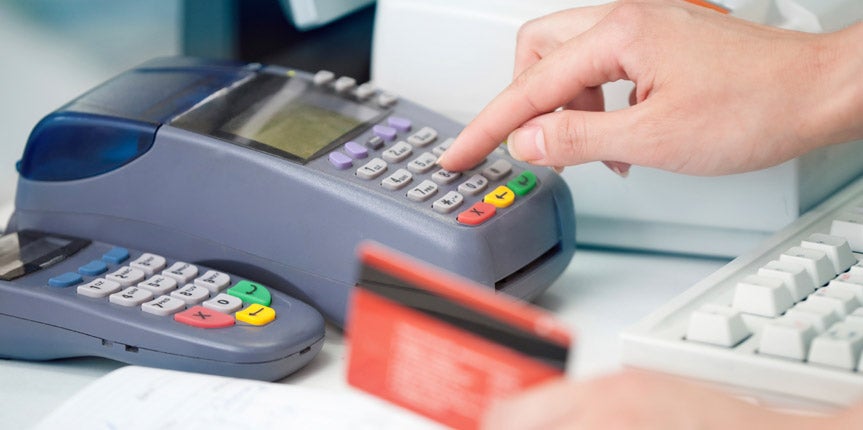Choosing the Right Processing Equipment for Your Business

The primary categorizations of business are Retail, MOTO, and E-commerce. Each business type will require different types of “equipment” to process transactions.
Retail
On a basic level, retail transactions will require the following equipment:
- Swipe terminal. The swipe terminal reads the magnetic stripe on the credit or debit card. The stripe contains information about the cardholder that will allow you to process the transaction. There are two types of swiping units available: the slider and the insert reader. The slider is primarily used by merchants who allow the customer to slide the card through the reader, while the insert is more commonly used as a self-service device in which the user inserts the card into the terminal, pulls it out, and waits for approval to proceed.
- Internet connection. In order for the terminal to send the necessary data to the credit card company, it will need an Internet or phone connection.
- Printer. A receipt printer will be needed to print out the result of the transaction for the customer’s signature and/or for their records.
Many providers offer packages that deliver all-in-one systems for retail transactions. These systems are known as POS (point of sale) systems, and they include everything needed for a business to process credit cards.
MOTO
MOTO stands for Mail Order and Telephone payments. Here, customers will mail you a form containing their credit card information, or they will call your company on the phone to order a product and provide their card information. In both instances, it is a card-not-present (CNP) transaction, as the customer is not physically present, and the payment will be run by one of your sales representatives through a virtual terminal, which is the type of “equipment” you need to process the transaction:
- Virtual terminal. A virtual terminal is a web interface typically connected to a payment gateway where your sales representative can securely key in, through the computer, the customer’s credit card details. Payment providers, such as GoSmallBiz’s partner, Bluefin, provide the option for a virtual terminal for all merchants that process through their gateway.
The benefits of a virtual terminal can extend beyond MOTO transactions. For example, if you process E-commerce transactions, and the customer calls your sales hotline to ask a question about a product, the sales representative can give that customer the immediate option of processing the order over the phone, rather than entering it into the website.
E-commerce
E-commerce is the fastest growing business categorization in the world. Every major brick-and-mortar establishment also has an E-commerce presence, and even such traditional retail establishments as restaurants have gotten into the E-commerce game by offering gift cards or branded clothing on their websites. Companies with both a POS and online presence are also called bricks-and-clicks.
In order to process E-commerce transactions, a merchant will need to construct a pay page, a confirmation of payment page, and a mechanism to email the consumer confirmation of the transaction.
There are two ways merchants can do this:
- Construct a shopping cart. There are dozens of providers that offer software packages that will allow you to develop a full-fledged E-commerce website, from merchandise pages to the payment page (also called the “shopping cart”). The software provided by these companies will frequently hook into a payment gateway which you can work with to process the transactions to the acquiring bank. It is up to the merchant to make sure that the shopping cart they choose can indeed work with their current or new payment gateway.
- Adopt a pay page solution. A second alternative is a hosted pay page. Most merchant processors offer a “pay page” solution as part of their processing bundles. This means that your processor will design and host your pay page (or “shopping cart”) for you, eliminating the chance that any cardholder data will ever run through your website. Additionally, because it is offered through your processor, the pay page is already hooked into the payment gateway. GoSmallBiz’s processing partner, Bluefin, has a pay page solution for interested merchants.
Mobile
And finally, mobile “smart-phones” are emerging as a flexible method of accepting payments, and they can supplement every type of business categorization discussed above. In addition, accepting mobile payments can benefit “remote” businesses, particularly those that have agents and employees in the field, such as:
- Delivery companies
- Repair providers
- Trade show companies
- Mobile meal providers
- Taxi and limo companies
Depending on the type of phone, you might be able to attach a portable swipe reader to process the payment, while other downloadable applications give you the option of entering the card information directly on the screen.
